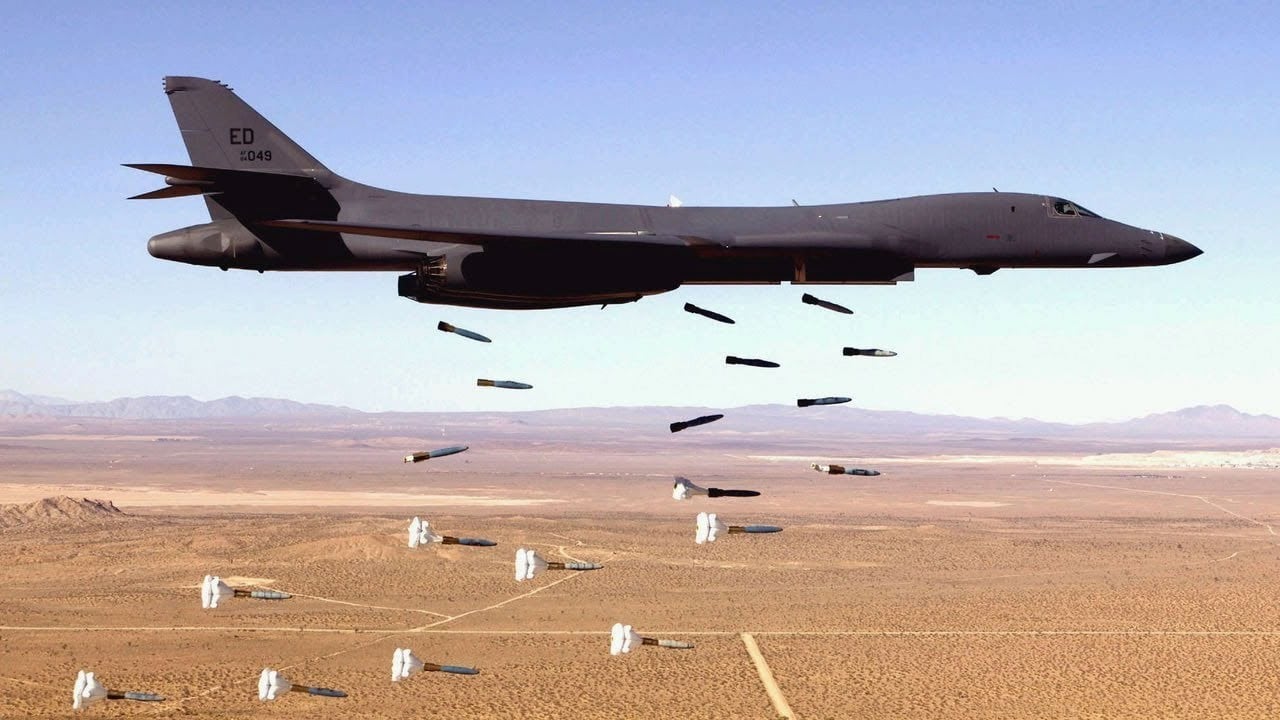The US Air Force B-1B Lancer Bomber has a long history of progressing from design concept to prototype, validation, cancellation, re-design, and production.
A long process that rivals some Old Testament family genealogies.
A short history of the milestones would be:
1970: Contract award to Rockwell International for the B-1A
1974: First flight of the B-1A (Company now called North American Aircraft Operations)
1976: Program cancelled
1981: Re-design and order to build B-1B
1983: First flight of the B-1B
1984: First production unit of B-1B rolled out
1986: B-1B enters USAF service
1995: B-1B nuclear capabilities are deactivated
1998: B-1B first used in combat during Operation Desert Fox
Part of the reason for the many years that passed between the initial contract award and entering USAF service was the many changes that took place in defining the aircraft’s mission.
The aircraft evolved from the B-1A configuration to the present-day B-1B Lancer due to several factors.
1A to 1B Evolution
The B-1A was initially developed to fulfill a requirement for an aircraft that could fly at lower altitudes than the B-52, could be re-deployed more efficiently and in more survivable facilities, and was capable of supersonic speed of previous-generation bomber platforms like the B-58 Hustler.
The mission profile shifted several times, and the threat profile presented to the American strategic bomber force became more formidable.
Viktor Belenko, the Russian Air Defense Forces (PVO) pilot who defected in 1976 with his Mikoyan MiG-25 aircraft, later revealed to his US debriefers that a newer, more capable version of the MiG-25 was in the works, an aircraft that turned out to be the MiG-31. This interceptor aircraft would have made the B-1A vulnerable to flying higher altitude missions.
These developments created a revised design that became the B-1B, heavier and slower than the B-1A. But it also carried more payload and had a significantly improved radar.
A re-designed inlet and other modifications also reduced the aircraft’s radar cross-section (RCS) – roughly 10 percent of the B-1A.
The B-1B’s onboard self-protection suite: an electronic warfare (EW) system, radar warning receiver (ALQ-161) and countermeasures (chaff and flare) system – plus a towed decoy system (ALE-50) – all complement the low-radar cross-section.
Collectively, they all form an integrated multi-spectral defense system that makes the aircraft survivable in any hostile airspace.
The aircraft’s ALQ-161 electronic countermeasures (ECM) system is one of the first to generate “smart” jamming EW technology. Using the passive threat detection module, it identifies where that signal sits on a full spectrum of adversary threat emitters. It then emits the appropriate jamming mode, which can activate either automatically or through operator-selected input.
Post Cold-War Mission for B-1B Lancer
The B-1B Lancer was intended to perform the role of a gap-filler until the B-2 Stealth Bomber would come online.
That aircraft was built in limited numbers due to entering service only at the end of the Cold War. Only 21 B-2s were ever built, so once it was in inventory, the B-1B was still kept in service and converted to a platform used to deploy conventional weaponry rather than nuclear payloads.
Once the B-1B was committed to conventional-only missions, it played a major role in supporting US forces in both the Afghanistan and Iraq wars. The once-nuclear bomber is praised for its flexibility and the capacity to fly long-endurance missions while carrying huge and diverse weapons loads.
These are missions the aircraft was never designed to carry out, but its ability to perform them is a tribute to the longevity of the platform.
In 1999, during Operation Allied Force, six B-1s flew 2 percent of the strike missions, but that 2 percent constituted 20 percent of the ordnance dropped.
During Operation Enduring Freedom, the B-1 flew on 2 percent of all sorties while dropping over 40 percent of the precision weapons in theatre.
The B-1B is now planned to remain in service and to continue at a high operations tempo until at least 2040 and possibly beyond.
About the Author: Reuben F. Johnson
Reuben F. Johnson is a survivor of the February 2022 Russian invasion of Ukraine and is now an Expert on Foreign Military Affairs with the Fundacja im. Kazimierza Pułaskiego in Warsaw. He has been a consultant to the Pentagon, several NATO governments and the Australian government in the fields of defense technology and weapon systems design. Over the past 30 years he has resided in and reported from Russia, Ukraine, Poland, Brazil, the People’s Republic of China and Australia.

